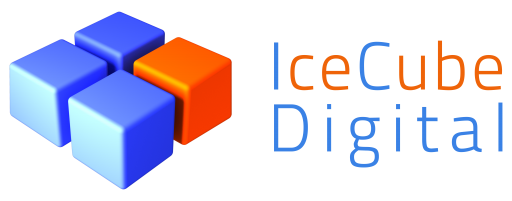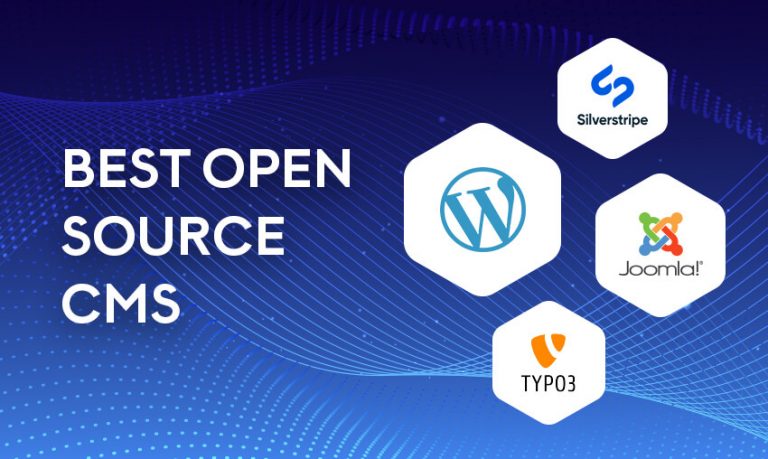With the business industry booming and start-ups being a favourable choice for youngsters the number of businesses is increasing day by day. In this era of digitalization, websites and blogs have become more of a necessity for businesses and companies.
Here is where content management systems (CMS) come into picture, to know more about CMS and top 10 open source CMS available, read further.
What is an open source Content Management System?
A content management system is a tool wherein the user can create, manage and alter content in their website without having to bother about the process behind it (back-end technology).
In simple words, it frees the user from the trouble of going through programming or hiring a professional programmer to manage the content on their website. Open source refers that the tool has no license fees, i.e. free to use.
With so many content management systems in the market, it might be a tad bit difficult to figure out which one to go for. Take a look at the top 10 list; it will definitely help ease your headache.
1. WordPress
With almost 65% control of the CMS market share, it is needless to say that WordPress is indeed one of the best in the business. It is a robust platform which is suitable for bloggers, e-commerce, small scale businesses and even news portals. You can hire a WordPress development company for creating professional WordPress websites
These companies deliver themes, plugins and templates to their clients and create website for them. WordPress has various built-in functions and drag and drop service which makes it user friendly and really simple to understand. Even if one doesn’t have the time to go through this process, one can always hire WordPress developer to complete the website and handle all the work related to it.

See How Our Experts Can Drive More Traffic to Your Website!
SEO: Boost your rankings and drive more organic traffic today!
Website Design/Development: Create a stunning website that converts visitors into customers.
Paid Media: Reach the right audience at the right time with expertly managed paid media.
2. Silver Stripe
Silver Stripe is an open source content management system that is free of cost and is useful in building and maintaining websites and website computer applications in the site. It allows the users to add features and modify their websites by using an administration panel. It works on Silver Stripe framework, which is a PHP website application framework.
Not only does it work well on desktop computers but also smart phones and tablets. Silver Stripe CMS has a simple interface for web application with a drag and drop navigation structure. It is pretty simple to embed videos, audio or pictures on to the website.
3. Joomla
With an extensive global community of helpers, volunteers and developers, Joomla is one of the most preferred website building software. It is powerful search engine optimized, multilingual and the list goes on.
It can be used for NGOs, governmental organizations, schools and intranets. In fact, Joomla is also a good platform for developers to create their projects or websites as the Joomla framework has a lot of in-built modules which make the task easier for expert programmers too.
4. Typo3
Typo3 is an open source CMS that is scalable, open, adaptable and multilingual. It has a decoupled architecture which helps the user to set up new sites within minutes on their existing infrastructure itself. Moreover, it is fast, secure and hence is suitable for higher engagement too. It is suitable o build enterprise CMS websites
Typo3 CMS is funded by Typo3 Association which is a Non-Profit Organization in Switzerland with around 700 people. Similar to WordPress, typo3 also has a number of Typo3 development company whom one can hire to create dynamic and interactive websites.
5. Drupal
It comes in three forms, Drupal for developers, marketers and for agencies. The best feature of Drupal is that all these three forms are uniquely and specially designed so as to suit the need of that particular field. Drupal CMS is built on Lamp Stack and has a modular design approach, i.e. modules can be added and deleted to modify the website.
The Drupal Core is a combination of PHP, Java Scripts, CSS and various image assets. High responsiveness, security, connectivity and ease of integration are some of the advantages of using Drupal as a CMS.
6. Craft
It was formed in 2011 and is based on PHP and powerful Yii. Craft prioritizes content over everything, it does not confine content to the framework of the CMS, rather provides complete independence to it. The user can create entry types and customized fields according to the content.
Craft provides the opportunity to create an experience that is specific to the project, without making any assumptions about the content. From user-friendly interface to completely customizable backend, Craft has been made to meet all of the user’s needs.
7. Contao
Contao has a dynamic user interface that uses Ajax and Web 2.0 technologies to make the process simple yet effective. Multiple back end languages and themes, high security due to advanced algorithm-based password protection and SEO ready platform are just a few of the many features that make Contao different from other CMSs.
The Contao front end is completely template based and is easy to understand and use. It has multi-language support, drag and drop features and much more to help the user build creative websites without being a professional coder.
8. Magneto
Although Magento does provide content management, this feature is only one of the available functionalities of Magneto. It is written on PHP and is specifically designed to serve ecommerce needs, i.e. to create and modify creative e-commerce websites. It can run several front ends from the same back end and manage product details, customer information and orders (typical e-commerce variables) with ease.
For having out of the box ideas converted into reality and onto websites, users can hire specialists who are experienced in Magneto 2 development. Also, it won’t be wrong in saying that Magneto is not a typical and general CMS but it is designed in such a way that it is best suitable for e-commerce applications
9. Thunder
Thunder is based on Drupal 8, making it possible for its users to benefit from the Drupal community as well as the modules contributed by Hubert Burda Media. Due to its extensive community and the Thunder coalition, Thunder’s feature set is growing constantly and evolving day by day.
It is Mobile friendly software which has interactive and dynamic frontend and backend themes. It enables the user to present content with movable paragraphs, pictures and videos making it more eye capturing. Preview mode is another stand out feature which allows user to have an outlook of how the article would look.
10. Ghost
It was officially launched for the people in October 2013 and since then there has been no looking back. Ghost is an open source, professional platform built on a modern Node.js technology stack, it serves as a publishing platform for many stories, blogs, websites which have millions of views each day.
Ghost allows the user to be in charge, be the person who makes all decisions based on content, style and other requirements. Users can explore a variety of integrations for Ghost to enhance and improve workflow, or even build their own custom integrations with Ghost’s open source developer SDKs.
Manage Your Content Right
Ready to start a blog? Want to create a website for business? Wishing to start a news portal? There is absolutely no need to wait, pick a CMS of your own choice after going through the best available options. Find out which one suits your interest and start working.

























